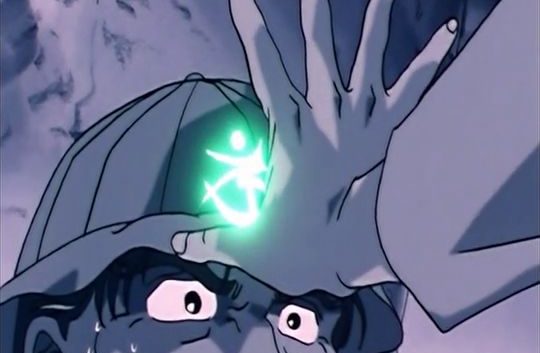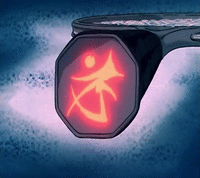One of the interesting things about the Classic season of the Sailor Moon anime is that each of the Four Kings of the Dark Kingdom not only had their own unique objectives, but they also had their own youma and their own ways of trying to achieve their goals. While Jadeite may have decided to get energy en masse, for example, Nephrite chose to get energy from a person when they were at their peak. But there’s one thing that I always wondered about many years ago when I watched Nephrite put his mark on his future victims: does that mark actually have any sort of meaning behind it?
The answer to this question is unfortunately, like is often the case when discussing the world of Sailor Moon, both yes and no. While the producers behind the anime were no strangers to adding in obscure hidden references into the background of scenes or playing games with character names, the answer to this question is rather straightforward – if you know where to look for the answer.
Since we see Nephrite use this symbol in multiple episodes when he puts his mark on a possession important to each of his victims, we can pretty definitively state what the proper orientation is (i.e., which way is up and, thus, how it should be interpreted). When you look closely at it, you can see that this symbol is really nothing more than a stylized form of the katakana used to spell out his name in Japanese – more specifically, the ネ (ne) in ネフライト (nefuraito).
But that’s no good reason to get disappointed, not yet at least! First, we need a brief history lesson.1
Hiragana and katakana,2 the two Japanese syllabic alphabets, developed from evolutions – simplifications, really – of kanji, which had been previously used in the form of man’yogana3 wherein kanji was read not for its symbolic meaning, but was used to phonetically spell out Japanese words. This was obviously not ideal for several reasons:
- Very little consistency between authors over which kanji was used to represent which sound (i.e., there are dozens of kanji that can be pronounced ne, so which do you use?)
- Kanji is time-consuming to write and requires more finesse for fine lines
- It was unclear when a kanji should be read for pronunciation and when it should be read for meaning (a proper noun, for example)
The katakana symbol ネ (ne) comes from a simplification of the kanji 祢 (ne),4 more specifically, the left radical of that kanji. When you take a look at how the kanji is simplified when writing in one of the various cursive styles of Japanese calligraphy, you can see the similarities with Nephrite’s mark.
You can see that as the kanji is written in more stylistic manners, the left radical bears a strong resemblance to the mark that Nephrite leaves on all of his victims. It looks like what we have here is a case of the anime producers actually looking back to the past in order to create something new and unique. I told you this wasn’t a complete disappointment!
Now if only someone could explain to me why it would be okay for Nephrite and Naru to date, like the trouble with Usagi and Mamoru in the anime, I think all of my questions would be answered.
References:
- I majored in Japanese history, so I need to do this on occasion; see About Me ↩
- See Kana (Hiragana and Katakana) (Wikipedia) ↩
- See Man’yogana (Wikipedia) ↩
- See 祢 (Jisho.org) ↩




Too true. That was really a relationship that creeped me out quite a bit. I never really saw it a real relationship for that matter. More a teenager adoring an adult. And he, who had dismissed her as useless crap, realized Naru is to be respected. Nothing else. If it was love, then only a one-sided one.
Nephrite’s official age, I believe, was 18-19. Still a marked gap from Naru’s 14, but only 4-5 years and Japan has strange ideas about acceptable dating ages, with several teachers in manga having relationships with their 16-year-old students and no one that discovers it even bats an eye. At 14, a guy that’s 18 doesn’t seem THAT much older, especially if the girl has a crush. Guys their own age seem immature and many girls want an older boyfriend that’s not so much blindly raging hormones. I remember when I was that age, it really wasn’t anything strange for a girl to date a guy 2-3 years older. There was also countless girls swooning over guys from boybands that were in their early 20’s even though they were 12-15. I kind of see it along those lines. Naru’s got a crush on a rich, attractive older guy and chases him like an idol. He then takes notice of her–and more specifically how Sailor Moon seems to hover around her–and she feels special at his attention. He sees her predominantly as a tool or bait until perhaps the end of their relationship, but he was never written to be a good guy and their relationship was not meant to be an example of a healthy one. Hense Usagi continually urging Naru to GTFO.
His age is suposibly 18 but he never really ages